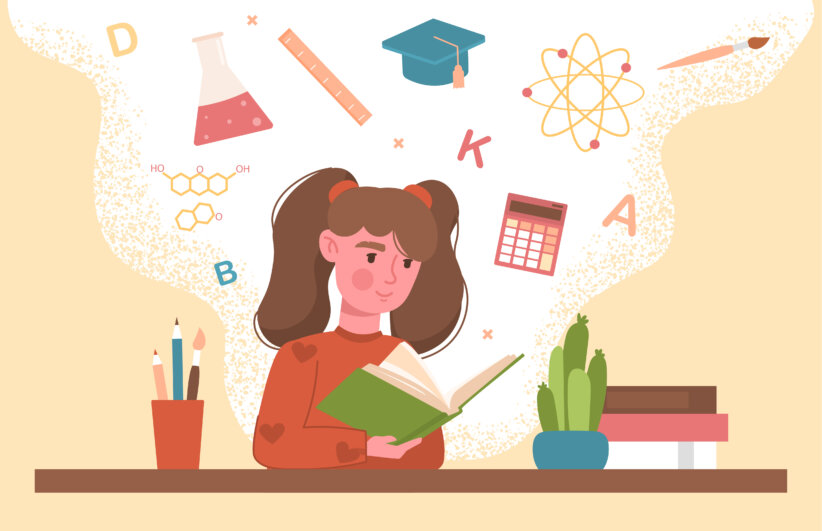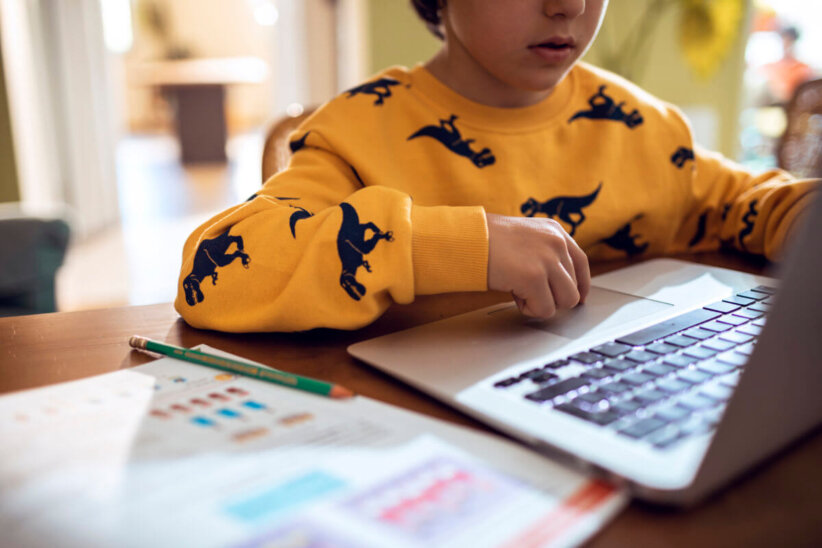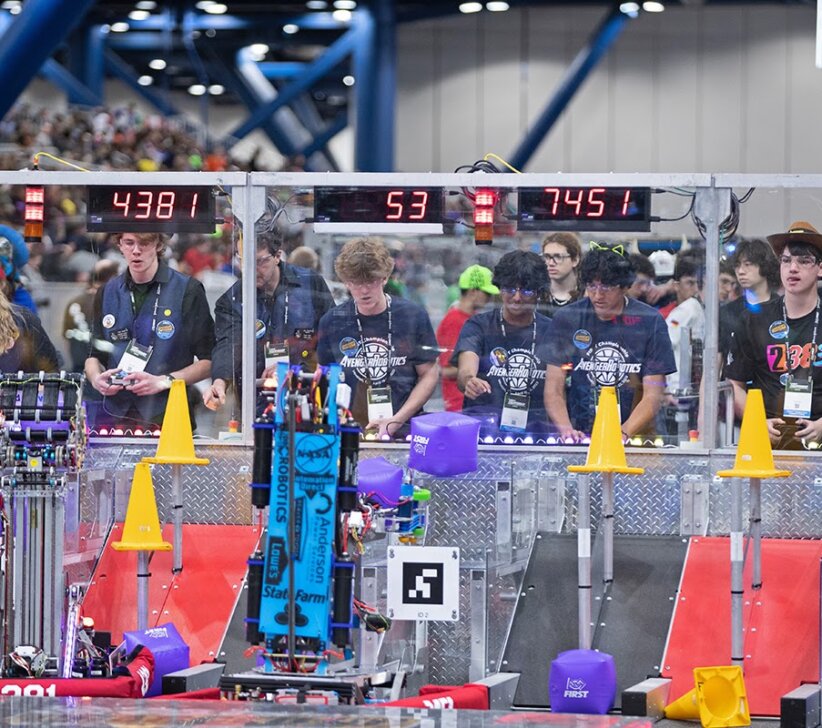There’s no denying that we live in a global world today. As different societies and cultures increasingly collide, speaking more than one language has its advantages. But it’s not just about talking to other people. Bilingualism has many other benefits, and that means a lot of parents are now saying “oui” to a bilingual education for their children.
A Family Choice
Ashley Share and her husband hear French being spoken every day at their home in Rye. They speak only English, but their three young children are all learning French at the French-American School of New York (FASNY) in Scarsdale. And in the short time they have been enrolled at the school, Share says she has seen a transformation in her kids.
Her 6-year-old son is now a first grader and is fluent in French. But when he started in 2013 as a kindergartner, he didn’t know the language at all. “It was a major challenge because in kindergarten reading and writing skills are introduced,” Share says. To her surprise, by the middle of the year, she heard her son sleep talking in French! Share credits the teachers at FASNY, who worked with him during school breaks and never gave up.
Share’s 5-year-old daughter is now herself in kindergarten at FASNY. Share says she was fluent in French by about mid-year in pre-K last year. Her youngest, a 3-year-old daughter, started in preschool at FASNY in the fall. “She counts to three in French and says little words here and there,” Share says. “For her, she will be essentially growing up bilingual and I believe learning French will be easiest since she started the youngest.”
Start Young
Starting at an early age is certainly important. Research has shown that the best time to learn a second language is from infancy to age 7. But most public schools in the U.S. don’t even start offering foreign language classes until middle school or high school. And experts say that presents a major problem. “After age 12, the brain kind of compartmentalizes everything in one rigid area, but before that it’s very flexible,” says Isabelle Adamo, the Head of Preschool at FASNY. “This is why it’s much easier to retain and learn a foreign language at a younger age.” (Though, of course, it is beneficial to learn another language at any time.)
Adamo says the preschool at FASNY gears everything toward language. “All the activities we have, whether it’s gross motor skills, whether it’s arts and crafts, whether it’s math, we pay very close attention to language. The children are asked to function academically in a foreign language.”
Teaching Style
As for how it’s taught, the students have two main teachers … one American and one French. Adamo says the learning begins with an emphasis on the French, with a split of about 80 percent French to 20 percent English for the non-Francophone students in their nursery school years. “As they progress through the years, more English will be added with a balance of about 50-50 in 2nd grade,” Adamo notes.
While some parents may worry that learning a second language will interfere with their child’s mastery of English, Adamo says that studies suggest the opposite. “The research now shows that the more languages you speak, the easier it is to learn another one.” Not only that, but Adamo says bilinguals actually have more vocabulary in their native tongue by speaking a different language.
The reason? “The brain is sort of like a muscle. The more you train it, the more it can absorb new things,” she emphasizes. Adamo says many important brain functions are strengthened in bilinguals, from learning to problem-solving capabilities. “When we talk about the ability to concentrate, regardless of distraction, that’s something that’s enhanced. Multi-tasking also is something that a bilingual or multilingual brain is able to do,” she says. That translates into bilingual students being able to more easily organize themselves and do things in order.
Adamo also mentions that learning a second language helps students with interpersonal skills, such as understanding subtext or reading between the lines. “The ability to listen, to be able to read situations, and to have some kind of a contextual sensitivity is also enhanced when you speak more than one language,” she adds.
Other Benefits
Ashley Share says she has seen a difference in her children since they started their bilingual education, and not just in regards to academics. For her son, starting French school helped with transitioning issues at home. “I think that the switching gears of bilingualism helps teach kids to transition, so in my experience bilingualism helps behavior,” Share says. She also notices her children being more independent and becoming broader thinkers who are more openminded and flexible with social ideas. “My kids … understand on a deep level that people do things differently and they don’t expect everyone’s home to be just like theirs.”
At FASNY, Share’s children are surrounded by kids of all different backgrounds. More than 50 nationalities are represented among the 800+ preschool through high school students at its three campuses in Westchester. Share says she considers the diversity “a great equalizer and the children are very friendly and supportive of each other.”
Of course, being bilingual can open many doors when it comes to traveling and careers. Julia Baldassano of Bronxville grew up in the suburbs of Paris and learned in French and English at an international school. She came to the U.S. in the fall of 1998 for college and now works at Big Brothers Big Sisters of New York City, in addition to doing French tutoring locally. “I think being raised bilingual opened my eyes to different cultures at an early age, and as I’ve grown, enabled me the flexibility to work in multiple countries and work with clients of non-English speaking backgrounds,” Baldassano explains.
Isabelle Adamo says FASNY has students who go all over the world after they graduate. She herself is a native of France who learned English in school and knew being bilingual would allow her to get a job in another country.
Ashley Share is now putting her children on that same path, choosing a bilingual education over a traditional public school setting. “I think the best case scenario it could change their lives, and worst-case scenario, it can’t hurt,” she contends. Ultimately, she feels her children will have more opportunities than she did. And for that, they may one day be saying “Merci beaucoup.”
Andrea White is an Edgemont-based writer and language enthusiast. She is now considering brushing up on her French
Local Bilingual Schools
The following schools offer bilingual education.
- French-American School of New York (FASNY ) Campuses in Scarsdale, Larchmont and Mamaroneck 250-0000 fasny.org
- German International School New York 50 Partridge Road, White Plains 948-6513 gisny.org
- The Japanese School of New York (also known as The Greenwich Japanese School) 270 Lake Ave., Greenwich, Conn. 203-629-9039 gwjs.org
- KEIO Academy of New York 3 College Road, Purchase 694-4825 keio.edu
- Lyceum Kennedy International School French American School in Ardsley 1 Cross Road, Ardsley 479-0722 lyceumkennedy.org
For more tips on selecting a quality bilingual program for your children, be sure to read 12 Tips for Selecting an Effective Dual Language Education








